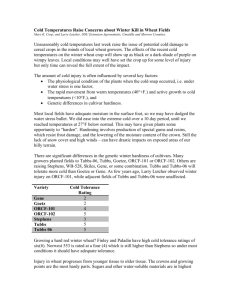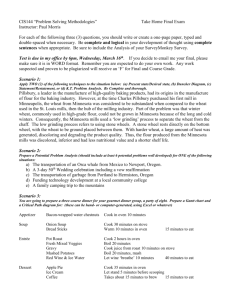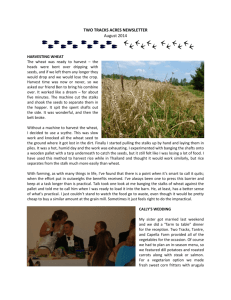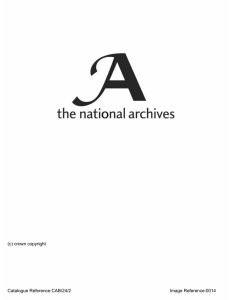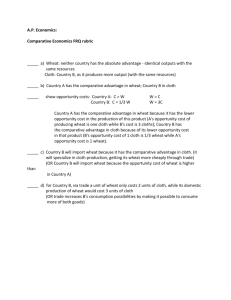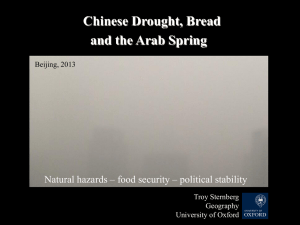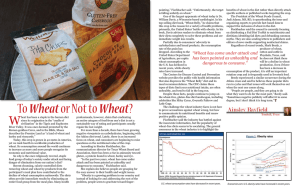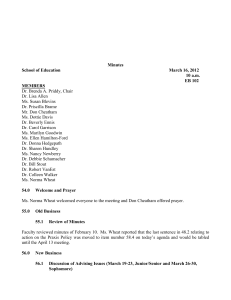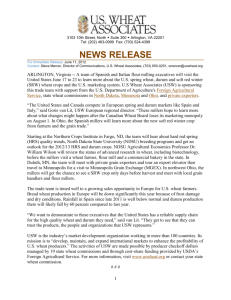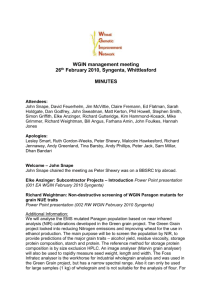Cold Temperatures Got You Worried?
advertisement
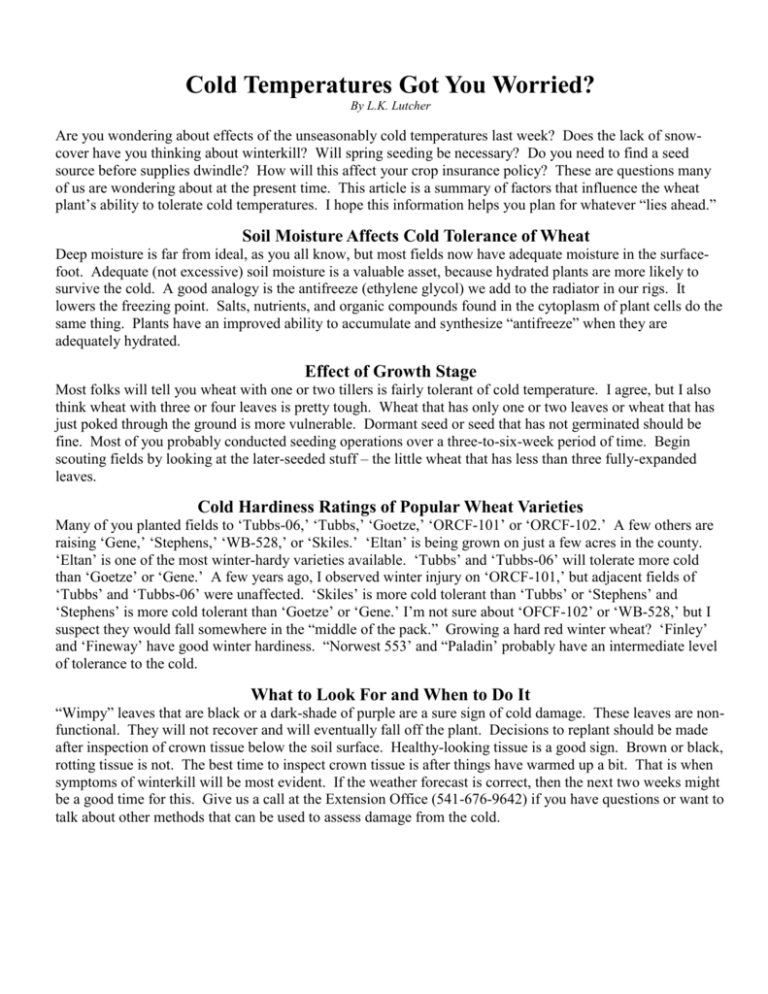
Cold Temperatures Got You Worried? By L.K. Lutcher Are you wondering about effects of the unseasonably cold temperatures last week? Does the lack of snowcover have you thinking about winterkill? Will spring seeding be necessary? Do you need to find a seed source before supplies dwindle? How will this affect your crop insurance policy? These are questions many of us are wondering about at the present time. This article is a summary of factors that influence the wheat plant‟s ability to tolerate cold temperatures. I hope this information helps you plan for whatever “lies ahead.” Soil Moisture Affects Cold Tolerance of Wheat Deep moisture is far from ideal, as you all know, but most fields now have adequate moisture in the surfacefoot. Adequate (not excessive) soil moisture is a valuable asset, because hydrated plants are more likely to survive the cold. A good analogy is the antifreeze (ethylene glycol) we add to the radiator in our rigs. It lowers the freezing point. Salts, nutrients, and organic compounds found in the cytoplasm of plant cells do the same thing. Plants have an improved ability to accumulate and synthesize “antifreeze” when they are adequately hydrated. Effect of Growth Stage Most folks will tell you wheat with one or two tillers is fairly tolerant of cold temperature. I agree, but I also think wheat with three or four leaves is pretty tough. Wheat that has only one or two leaves or wheat that has just poked through the ground is more vulnerable. Dormant seed or seed that has not germinated should be fine. Most of you probably conducted seeding operations over a three-to-six-week period of time. Begin scouting fields by looking at the later-seeded stuff – the little wheat that has less than three fully-expanded leaves. Cold Hardiness Ratings of Popular Wheat Varieties Many of you planted fields to „Tubbs-06,‟ „Tubbs,‟ „Goetze,‟ „ORCF-101‟ or „ORCF-102.‟ A few others are raising „Gene,‟ „Stephens,‟ „WB-528,‟ or „Skiles.‟ „Eltan‟ is being grown on just a few acres in the county. „Eltan‟ is one of the most winter-hardy varieties available. „Tubbs‟ and „Tubbs-06‟ will tolerate more cold than „Goetze‟ or „Gene.‟ A few years ago, I observed winter injury on „ORCF-101,‟ but adjacent fields of „Tubbs‟ and „Tubbs-06‟ were unaffected. „Skiles‟ is more cold tolerant than „Tubbs‟ or „Stephens‟ and „Stephens‟ is more cold tolerant than „Goetze‟ or „Gene.‟ I‟m not sure about „OFCF-102‟ or „WB-528,‟ but I suspect they would fall somewhere in the “middle of the pack.” Growing a hard red winter wheat? „Finley‟ and „Fineway‟ have good winter hardiness. “Norwest 553‟ and “Paladin‟ probably have an intermediate level of tolerance to the cold. What to Look For and When to Do It “Wimpy” leaves that are black or a dark-shade of purple are a sure sign of cold damage. These leaves are nonfunctional. They will not recover and will eventually fall off the plant. Decisions to replant should be made after inspection of crown tissue below the soil surface. Healthy-looking tissue is a good sign. Brown or black, rotting tissue is not. The best time to inspect crown tissue is after things have warmed up a bit. That is when symptoms of winterkill will be most evident. If the weather forecast is correct, then the next two weeks might be a good time for this. Give us a call at the Extension Office (541-676-9642) if you have questions or want to talk about other methods that can be used to assess damage from the cold.
